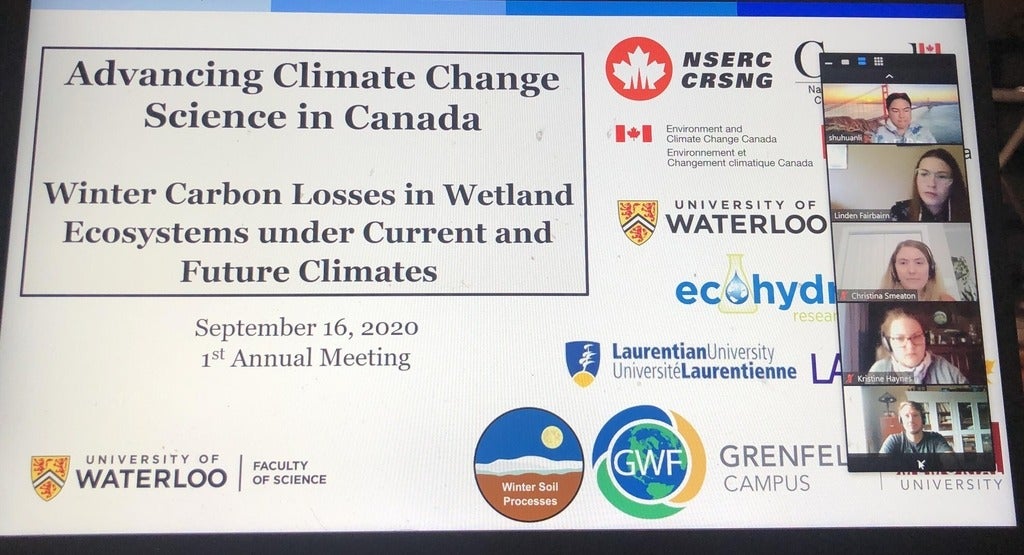Ecohydrology group hosts virtual annual meeting with Winter Carbon Losses in Wetlands project collaborators
The annual meeting for a research project funded by NSERC’s Advancing Climate Change Science in Canada program and led by the University of Waterloo’s Ecohydrology Research Group was held virtually on September 16, 2020. The project, titled “Winter Carbon Losses in Wetland Ecosystems under Current and Future Climates,” includes researchers and collaborators from Laurentian University, Wilfrid Laurier University, Grenfell Campus of Memorial University of Newfoundland, and Natural Resources Canada.
